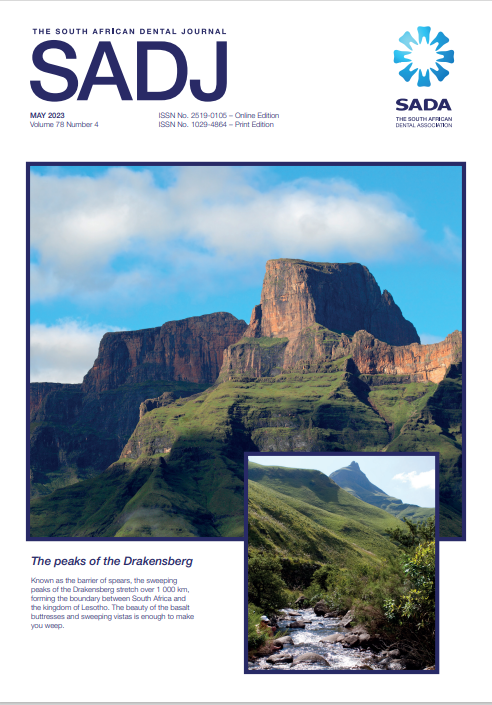Cone beam computed tomography use in sialolithiasis of the submandibular salivary gland
DOI:
https://doi.org/10.17159/sadj.v78i04.16411Keywords:
cone beam computed tomography, soft tissue calcification, Sialolith, submandibular glandAbstract
A 62-year-old diabetic male patient presented with right sided facial pain associated with a firm palpable mobile mass in the right submandibular area. Following initial examination, cone beam computed tomography (CBCT) investigation demonstrated multiple
smooth homogenous calcifications (Figure 1) collectively measuring 12mm x 9mm x 8mm within the region of the right submandibular gland (Figure 2). On resection of the submandibular gland, the histological features of the lesion were confirmed to be those of chronic sclerosing sialadenitis supporting the clinical impression of a sialolith.
Downloads
References
Tassoker M, Ozcan S. Two cases of Submandibular Sialolithiasis detected by Cone Beam Computed Tomography. IOSR Journal of Dental and Medical Science.2016;(15):124-129
Burke CJ, Thomas RH, Howlett D. Imaging the major salivary glands. Br J Oral Maxillofac 2. Surg 2011; 49(4):261-9
Miloglu Ö, Çaglayan F, Ezmeci T, Dagistan S, Demirtag Ö. Multiple cases of submandibular sialolithiasis detected by cone beam computed tomography. J Dent Fac Atatürk Uni 2010; 3 (20):189-193
Downloads
Published
Issue
Section
License

This work is licensed under a Creative Commons Attribution-NonCommercial 4.0 International License.






.png)